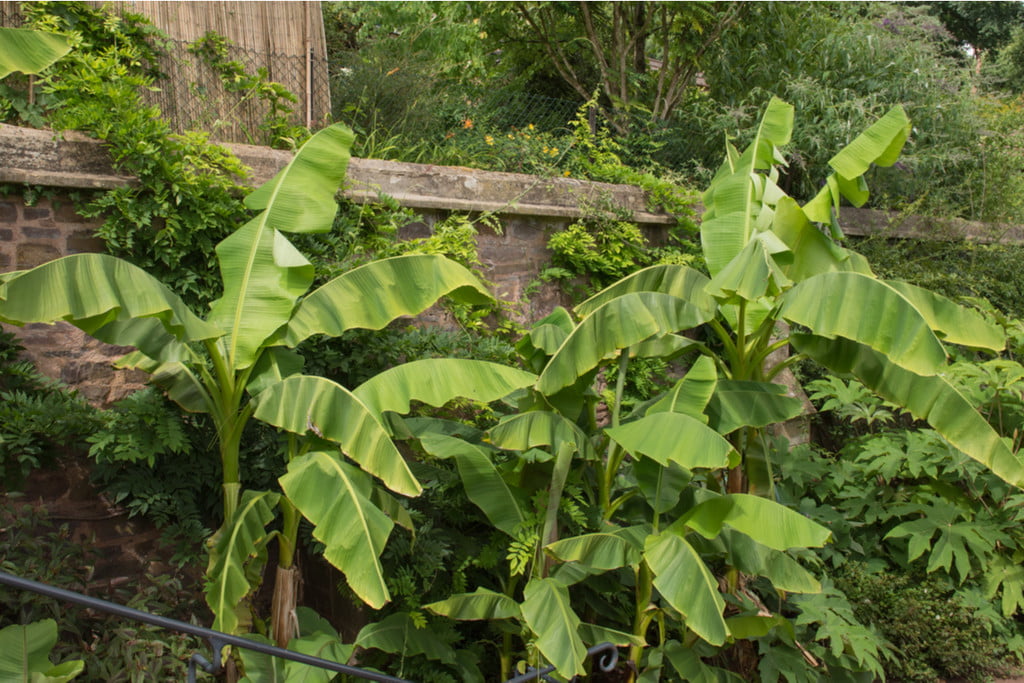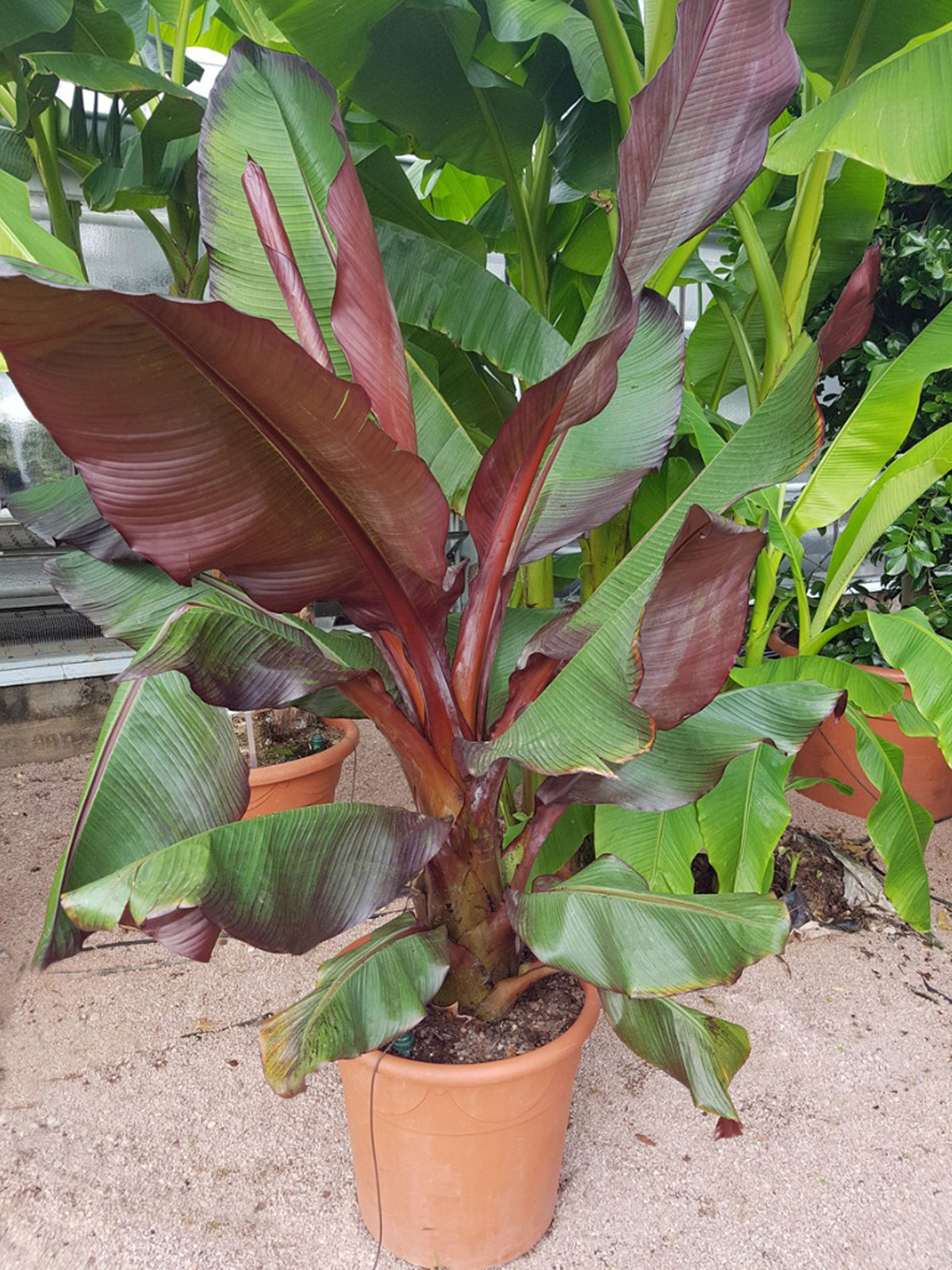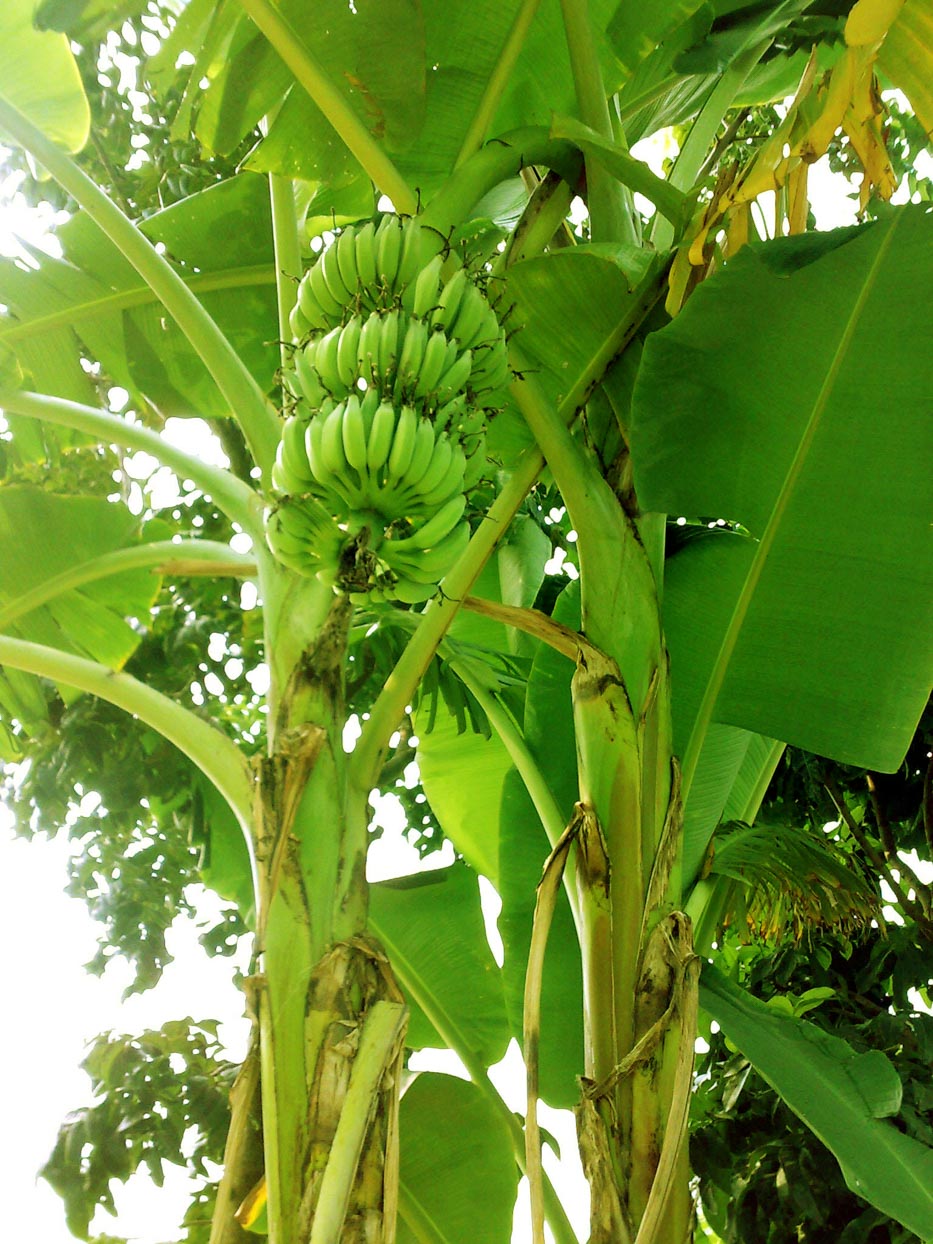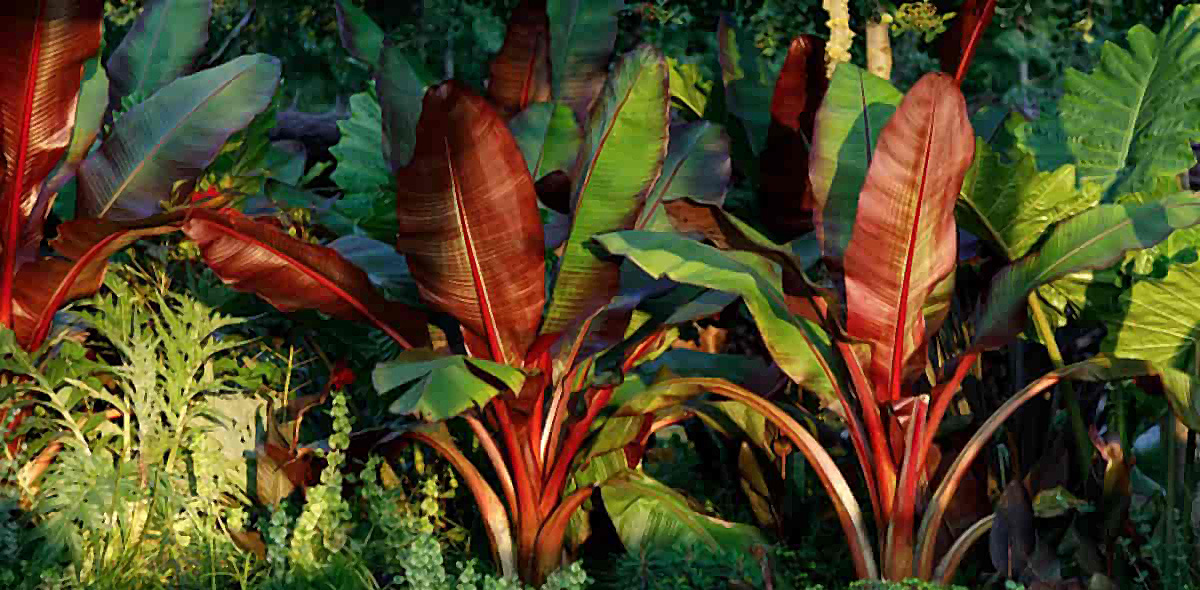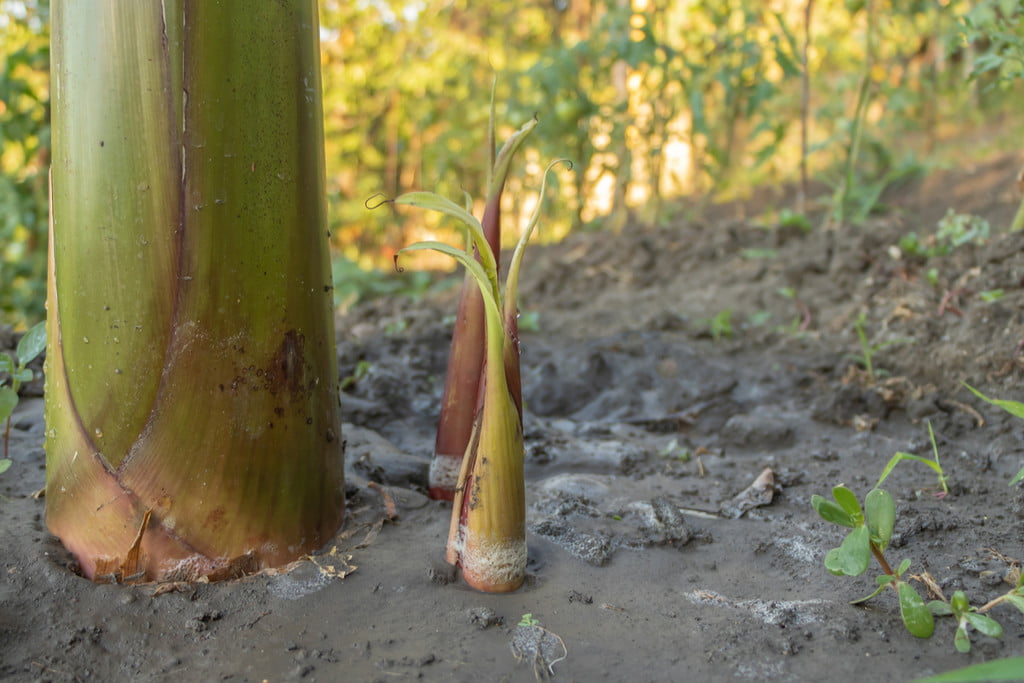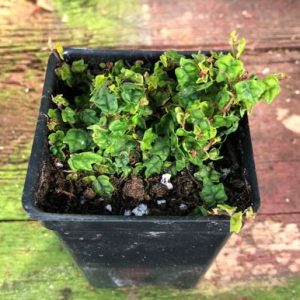Caring For Bananas
Regardless of the type of banana, do know that they do not do well in drought environments so make sure you water well with consistently moist soil. You will also want to fertilize regularly during the growing season. If outside, protect the stem (pseudostems) from strong winds that are common in the Miami Valley. With all bananas, the original stem will die after flowering and fruiting, but the roots will push out new shoots for long-lasting foliage.
